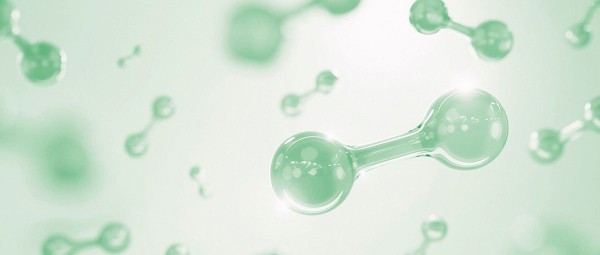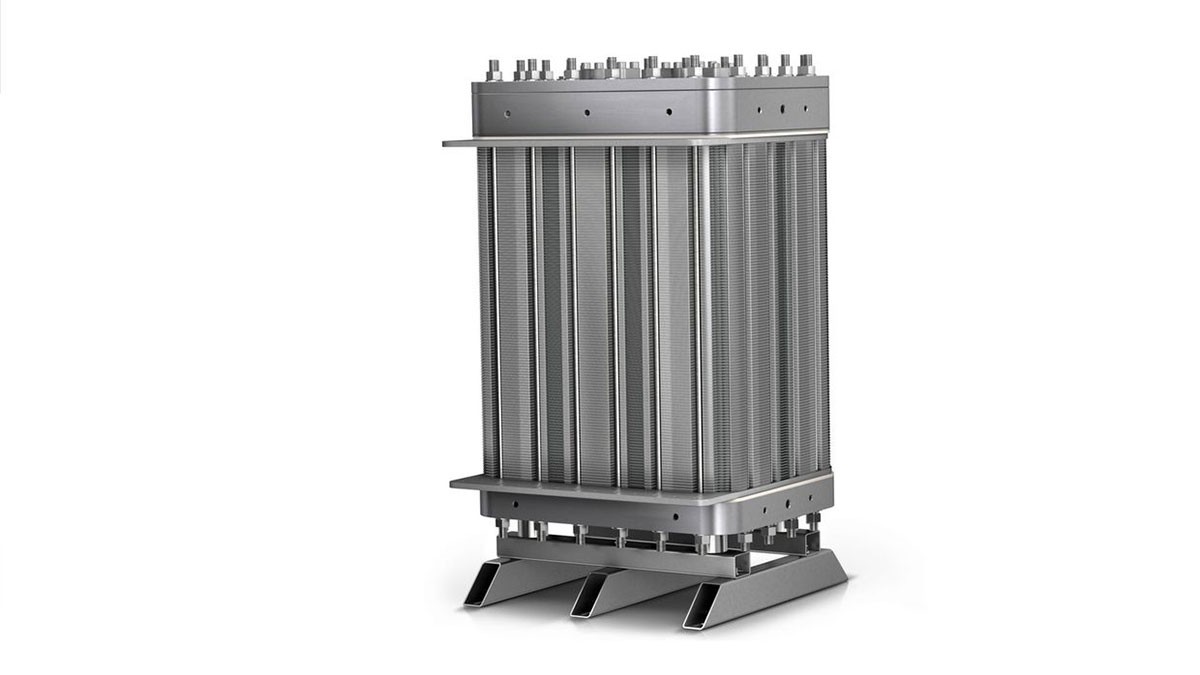Green hydrogen is an important catalyst for the energy transition. It is essential for a CO₂-neutral, sustainable future. Schaeffler contributes significantly to the successful establishment of the technology with innovative components and systems in electrolyzers and fuel cells.
Into the future with Schaeffler: Thanks to green hydrogen
Renewable energies are becoming increasingly important due to global climate change. Due to the varying availability of wind or solar energy, hydrogen technology is becoming a key area of discussion here. This is because hydrogen is an energy carrier that can be stored and transported, and is therefore a green alternative to fossil fuels such as oil and gas.

What is the definition of the hydrogen energy chain?
The energy chain for green hydrogen production starts by producing electricity from renewable energies. This is followed by electrolysis, where electrolyzers convert water to hydrogen and oxygen using green electricity. The hydrogen this produces can be collected or transported in hydrogen storage tanks immediately after production.
Where energy conditions are favorable, green hydrogen can be produced in large quantities. This can then be transported either regionally or around the world. Electricity, which may be used to drive an electric motor, is then produced again on site from the green hydrogen using a fuel cell. It is also possible to use the hydrogen directly in production processes, such as in the chemical or steel sectors. The production of synthetic fuels or other raw materials, for example, for the chemical industry, is also an option.
Does hydrogen represent a breakthrough in the energy transition?
Which hydrogen technology applications is Schaeffler focusing on?
As the Motion Technology Company, Schaeffler offers a wide range of hydrogen technologies – from generation to utilization for industrial and mobility applications. In commercial vehicles and passenger cars, we can rely on our system understanding for the entire powertrain and our expertise in the field of e-mobility. We are also focusing on solutions for rail and industrial trucks. In addition to this, hydrogen enables the operation of stationary applications, such as combined heat and power plants, making the decarbonization of emission-intensive energy sectors feasible – for example, in the steel, concrete, and fertilizer industries.
Schaeffler solutions for electrolysis and fuel cells
Our strengths in industrialization allow us to quickly translate innovations into high-volume production – and all in optimum quality. Our quality edge is based on an in-depth understanding of the connection between machine, tool, and process. All Schaeffler plants operate to the highest production standards. We guarantee these across all our sites and areas of application. This allows us to create products and solutions of the highest quality using cutting-edge material, forming and surface technologies.
Electrolysis
Schaeffler actively supports the energy transition. We offer small and medium-sized electrolyzer stacks for hydrogen production in decen-tralized facilities.
Learn more about the electrolysis stacks
Fuel cells
Schaeffler is capable of offering a broad product portfolio related to fuel cell systems. From the bipolar plate of the fuel cell stack to sensors, valves, and control units, a wide range of components, modules, and subsystems align with our traditional core competencies in product development, industrialization, and mass production of parts. These decades of experience help significantly reduce the cost of fuel cell and hydrogen technologies and bring them to market.
Our hydrogen technology network
Together with our strong partners, we want to take hydrogen technologies even further and give them a global presence. Our engagement and our network of partners is a significant benefit for us in this endeavor. We are involved in the following committees and collaborative projects:
- National Hydrogen Council
- Hydrogen Council
- Hydrogen Aliance Bavaria | Zentrum Wasserstoff.Bayern (H2.B)
- European Clean Hydrogen Alliance
- Hydrogen flagship project: H2Giga
- Hydrogenious LOHC Technologies
- Japan Hydrogen Association (JH2A)
- China Hydrogen Alliance
- China Hydrogen Promotion Association
- AeH2 (Spanish Hydrogen Association)
Funded projects
Driven by green energy, hydrogen technology has enormous potential and is an important element in the design of a sustainable future. Solutions for this technology are therefore a promising field for Schaeffler which we will continue to develop.
News
Contact



